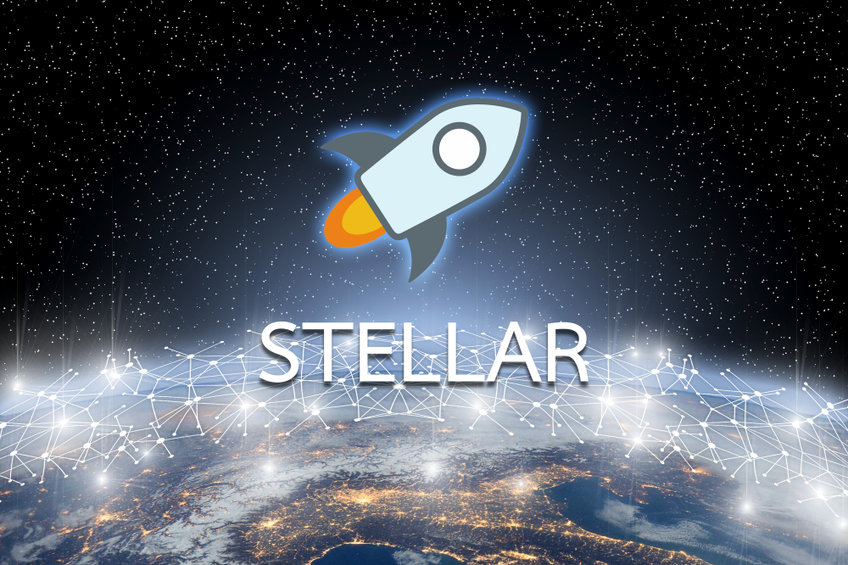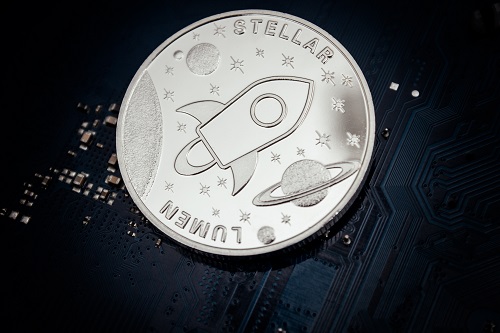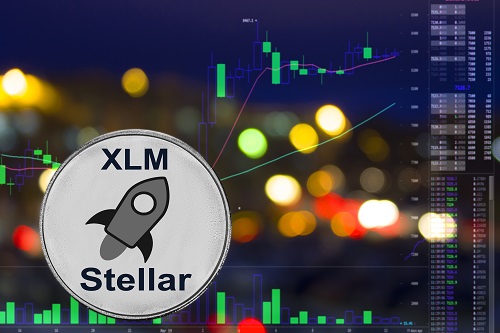Stellar Guide | Learn Everything About XLM
Stellar is a decentralised open-source network that has been specially developed to store and move any type of money, including conventional fiat and digital cryptocurrencies. The network was established in 2014 and is developed under the supervision of the Stellar Development Foundation (SDF).
Stellar was built to connect banks with payment systems in order to facilitate low-cost value transfers across borders. Lumens (XLM) is the token that powers the Stellar blockchain. The network is very similar to its predecessor, Ripple, but whereas Ripple is aimed at large financial institutions, Stellar was created to be used by everyday individuals. Learn everything about the Stellar Lumens (XLM) in our comprehensive guide!
What are Stellar Lumens?
The stellar payment network is created to be compatible with digital representations of any traditional or digital currencies, but it also possesses its native token, which is known as lumen and is denoted by XLM. The network supports the affordable, secure, and quick transfer of payments across global borders. It can also act as an ICO platform since it is much easier to utilise relative to Ethereum.
XLM is currently valued at $0.077 or 0.00000759 BTC. This helps users to send money or assets without having to incur heavy transaction fees or charges. Each Stellar account holder needs to have a minimum deposit of 1 XLM in their account to use the network. Although this wasn’t required by design, it has been included in the system to deter spam and frivolous or malicious uses.
Stellar Lumens are used on the Stellar network to pay for transaction fees and act as an intermediary currency for other assets. At network genesis, 100 billion stellar lumens were created. Since then the foundation has been actively distributing them through coin drops SDF allocated 20% of the initial lumens to be distributed for free to holders of bitcoin and XRP (19% for bitcoin holders and 1% for XRP holders). Additional coins are created at a fixed inflation rate of 1% per annum. New Stellar Lumens are distributed via a direct voting method back to Lumen holder.
The traditional way that money and payments work is a big mess. Nothing really interoperates. big banking conglomerates like SWIFT and SEPA are messy agreements between international banks, and they are light years ahead of banking infrastructure in the developing world. Sure people can use Western Union, remittance services and PayPal, but these services all take time, cost lots of money, and require the consumer go out of their way to use them. What Stellar is really trying to do is connect all these platforms together.
Is Stellar a Type of Money?
Although Stellar enables transfer or cross-border payments and exchange of assets through its blockchain network, it cannot be classified as a currency. It can be considered as a financial processor of currencies, assets, or value. You can use it to make global payments.
Similarly, the built-in decentralised network can also be utilised by the traders to exchange securities, forex, cryptocurrencies, and other assets. Users have the option to swap between different tokens with the help of user-friendly features that are present in the protocol.
Is it Legally Recognized?
With the exception of the countries that have outright banned cryptocurrencies and their trading, Stellar or Lumen’s status has been legally recognised. In one instance, New York-based financial regulators gave Lumens the nod of approval to trade on cryptocurrency exchanges. Not only that, but Stellar has also received Islamic finance certification that makes it compliant for Islamic financial products.
The regulatory success of the coin has helped it to build credibility in the eyes of veteran investors and professional traders. It is one of the reasons why Stellar has been one of the top-performing cryptocurrencies on any trading platform.
What Do People Use Stellar For?
Generally, people think of cryptocurrencies as an investment driver, but there are other applications of the network as well as its token. For instance, Stellar can be used for:
-
Transferring micro payments globally in any currency at an affordable cost in a secure manner.
-
To invest and trade on a short and long term basis with the intent of making a profit.
-
Exchanging a wide array of assets including securities, forex, and cryptocurrencies through the Stellar blockchain.
The Stellar network basically plays the role of financial institutions by replacing their costly and slow financial systems. It provides you with an easy and quick way to transfer value regardless of how it is stored.
What Merchants Accept Stellar?
Although Stellar is not primarily a currency, its popularity means that there are many online stores and websites that accept Lumens as a mode payment in exchange for their services or products. Some of the merchants include the following:
-
Smarty Scripts – A small business that accepts Lumens to provide customers with software development services.
-
NOWPayments – Another useful service that delivers easy to use APIs for seamless integration so developers can save time
-
ICOadm.in – It is a functional investor dashboard that delivers support for a wide range of fiat currencies and cryptocurrencies.
-
Giftcards.bidali.com – Using your Stellar Lumens, here you can purchase many types of gift cards for your loved ones.
-
TMD Studio – As the name suggests, the business provides the services of designers and architects from inception to complete the project.
The Technology Behind Stellar
The stellar network is a community-owned, open-source, distributed blockchain protocol that is designed to enable the cross-asset exchange of value. It can execute financial transactions at a fraction of a penny while providing a quick and secure way to transfer value. The native currency of the network is called Lumens (XLM), and in order to use the network, you have to hold a nominal amount of XLM in your account. Using these Lumens, a network user can transfer any currency they have to anyone present in any country.
It takes only 3 to 5 seconds to execute a transaction while the average transaction fee is $0.01 for 300,000 transactions. At the time of writing, the network can handle up to 3,000 transactions per second, and it is based on the Stellar Consensus Protocol (SCP).
How it all started – The history of Stellar
Observing the challenges of the unbanked and under-banked people with meagre incomes, especially those who live in developing countries, Stellar was founded in 2014 by Jed McCaleb and Joyce Kim. It is important to note that Jed McCaleb also founded Mt. Gox cryptocurrency exchange which was one of the largest trading platforms at the time and also co-founded Ripple (XRP). The Stellar network was developed to create a payment technology that can connect banks and other financial institutions, cutting down the time and cost required to process international payments.
Due to its reputation and non-profit motive, many big names, both in the financial and technology sectors, adapted the network. These include IBM, Stripe, Deloitte, Wipro, Quantoz, Rehive, Poseidon, Factury, Moni, and more.
Mining Stellar – How are new coins created?
It is interesting to note that the Stellar network does not follow the proof-of-work model like Bitcoin and many other cryptocurrencies. Lumens can’t be mined. When the distributed network went live at its inception, 100 billion Lumens were created with a pre-specified 1% inflation rate. But in October 2019, the community voted to end the inflationary mechanism, and the overall supply of the token was reduced in the subsequent month to the 50 billion mark without any possibility to create more.
So, unlike Bitcoin and Ethereum, which can be mined through proof of work or proof of stake protocol, Lumens cannot be mined.
Supply – How many coins are available, what if they run out?
Currently, there are 20 billion Lumens in circulation in the open market while the Stellar Development Foundation (SDF) holds 30 billion Lumens to support the development and growth of the Stellar network. Those tokens will be gradually injected into the open market. When all the Lumens are out in open circulation, market forces like demand and supply will determine the price of XLM.
If there is an increasing demand for the currency, the price will go up accordingly and vice versa. However, new Lumens won’t be created to fulfil the surging demand.
Decentralisation – What does it mean?
Decentralisation is a concept that denotes that no central authority should have absolute or substantial control over the matters of an organisation, network, or community. This central authority could be the government, a large enterprise, or a huge investor. An overwhelming majority of the cryptocurrencies are created with the decentralisation principle to ensure that nobody can influence the blockchain. Major decisions are made through community voting, and transactions are processed through consensus of the network. Once a change has been made, it cannot be reversed or modified.
Decentralisation brings about a more democratic and transparent way for everything digital, including currencies, content, apps, financial institutions, and other applications.
Stellar Vs Ripple
Stellar was born from a Ripple hard fork back in 2014. Both Ripple and Stellar were co-founded by Jeb Mccaleb. Jeb left Ripple on bad terms, with the Ripple Foundation, that would drag him into a lawsuit. He was later cleared of all charges, but a daily sell limit was imposed on his XRP holdings to stop him dropping all his XRP at once and crashing the price of Ripple. Stellar isn’t just a copy of Ripple. Since the genesis block was mined, in 2014, the open source development team have made serious changes to the underlying blockchain technology creating a new Federated Byzantine agreement they call the Stellar Consensus Protocol (SCP) There is some centralisation in every blockchain. They don’t build themselves. But Stellar isn’t as centralised as Ripple. Ripple, as an organisations, elects nodes that can add transactions to the public ledger. While anyone can participate in the Stellar network if they are trusted by other nodes.
Stellar as an Investment
One of the major reasons for investing in cryptocurrencies, including Stellar, is their volatility which provides investors and traders with a chance to make quick profits. Moreover, if you see enough potential in a particular blockchain, you can also hold it, in the long run, to make substantial gains over the period of months or years. However, you need to do your research and be market conscious before you put your money on the line.
Why Should You Invest?
There could be a multitude of reasons why someone would like to invest in cryptocurrencies. They are not traditional investment drivers; hence, cryptocurrencies come with their own set of pros and cons. That being said, major reasons for investing in cryptocurrencies could be:
-
Attempting to find a secondary source of passive income through investing in Stellar Lumens or other cryptos.
-
Saving your funds in a more decentralised and democratic environment instead of relying on traditional institutions.
-
To support the Stellar network so they can fund their development and growth in the long run.
It should be kept in mind that investing in cryptocurrencies can have different goals which require distinct and unique strategies. This is why it is crucial that you understand the underlying reason for your investment and make yourself aware of all the factors that can affect your investment.
Price and Volatility – Why is the price so volatile?
Since all the cryptocurrencies, including XLM, are decentralised and are not under the control of the single regulatory body, market forces can have a substantial effect on their prices. Introduction of new technology, updates, regulations, social acceptance, market sentiment, influencers’ opinions, and many other factors can move the price in one or the other direction. This volatility provides investors with an opportunity to make profits both in the short and long term.
On the other hand, the same volatility can pretty much sink your capital if you are not diligent and cautious. That’s why it is important to do your research, diversify your investment, and keep a keen eye on price charts to ensure that you manage your risk.
Where to Buy & Sell Stellar
You should bear in mind that Stellar is available on many cryptocurrency exchanges and trading platforms. However, you need to choose the platform wisely. Take into consideration all the factors that matter, including reputation, ease of use, fees and commissions, payment processing, and minimum deposits required. We have short-listed three of the top trading platforms where you can buy Stellar below.
-
eToro – When it comes to social trading platforms and buying cryptocurrency CFDs, there are few exchanges that can compete with eToro. With top-notch analysis, ease of use, and affordable fees, eToro is one of the best options out there.
-
Plus500 – Here you can not only buy and sell XML CFDs, but also all the other cryptocurrencies including BTC and ETH CFDs.
-
FXTB – Primarily created for trading forex as the name suggests, FXTB has used its massive reputation to enter into the cryptocurrency arena with leading features including demo account and user-friendly platform. You can choose to purchase XLM here.
What Will Stellar Lumens Be Used For?
Stellar is a value exchange network. Digital assets like pounds can be converted to USD and sent across the world very quickly. Using existing banking infrastructure, a transaction between the UK and the US can take 2 – 5 days, and it might cost $10 – $30 in fees. It’s worse in developing nations. Where non competitive industries and sometime complete failure of traditional banking makes it the most expensive for some of the poorest people to send money. Mobile banking is an interesting phenomenon that has taken off in African and developing Asian nations for these exact reasons.
Stellar Lumens would be a cheaper and more reliable alternative to using a phone as a bank. XLM is used to pay the network fees. To prevent spam, each transaction costs 0.00001 lumens, which compared to a $10 + Bitcoin fee, or a $20 SWIFT transaction fee, is nothing. Stellar’s Lumen isn’t the only digital asset that can be exchange on their network. You can also issue tokens to assets. Cash is an asset, but so are bonds, debt, goods and services, deeds and inventory. Assigning a credit to these assets through a trust line – your wallet – makes it possible for any Stellar Lumens holder to participate in the distributed exchange which is built into the platform at a protocol level. Stellar’s platform is also seen as an ERC20 alternative. Not as burdened by scalability issues as the Ethereum network, but still able to trade tokens, it has attracted Mobius, a $35 million ICO, to their platform.
Where to Store Stellar
Buying Stellar or any other cryptocurrency is one thing, but storing it safely is another. If you are going to hold your XLM for long, then the exchange account is not a good option, and you will need a cryptocurrency wallet.
What Are Wallets?
Cryptocurrency wallets are hardware devices or software applications that are used to securely store cryptocurrencies, including Bitcoin, Ethereum, Monero, Stellar, Ripple, and more. They deploy the latest security features like military-grade encryption, two-factor authentication, and passphrase protection to ensure that your funds remain safe.
What Types of Wallets Are Available?
If you are searching for the right cryptocurrency wallet, there are different types of wallets available, including the following:
Web Wallet
These wallets are those that are either present within the cryptocurrency exchange or are browser-based so that you can access your funds through credentials. They are user-friendly and quick to use but are prone to more risks relative to other types of wallets.
Mobile Wallet
Wallets that are made for those traders who want to store their Lumens on their smartphones are called mobile wallets. They are convenient to use and offer multiple functions and security features for investors. Stargazer and Lobstr are a couple of options for those who want mobile wallets.
Desktop Wallet
Although desktop wallets are rather inconvenient to use, they bring more security and features to the table along with live trading. These are software applications that you can install on your computer, including Stargazer, Atomic, and Foxlet wallets.
Hardware Wallet
If you don’t want to compromise on your security, then the best option you have available is a hardware wallet. They are completely disconnected from any network and offer a high standard of security through passphrases and two-factor authentication. You can use Ledger Nano S and Trezor to store XLM.
Wallet Combinations
If you want the best possible security, you can use wallet combinations since many of the aforementioned wallets can be interlinked with each other. This gives you more access, security, and control over your crypto funds and digital assets.
Storing your wallet on an exchange, the potential upside and downside
Every trading platform and cryptocurrency exchange offers a built-in wallet which you can access using your credentials. While this is a reasonable way to store your Lumen (XLM) tokens, this type of wallet has its own upsides and downsides.
Pros
-
Easy accessibility through credentials.
-
A quick exchange between different coins.
-
Convenient storage as you don’t have to do anything.
-
Suitable for short-term traders.
Cons
-
Do not offer the highest level of security.
-
Access can become an issue if the site is down.
-
Service can go out of business.
-
The target of data and security breaches.
Frequently Asked Questions
Alternative Cryptocurrencies
Elastos
Maidsafecoin
sweatcoin
FUNToken
Vertcoin
News

Societe Generale-FORGE to expand stablecoin to Stellar
20 February 2025 Societe Generale-FORGE will launch its EUR CoinVertible stablecoin on the Stellar network. SG-FORGE first deployed EURCV on…
XLM bullish ahead of Stellar network upgrade; Meme Moguls gains momentum
25 January 2024 Stellar (XLM) is gearing up for the launch of smart contracts on the mainnet. Meme Moguls (MGLS)…
XLM price: could key Stellar news help stem bearish flip?
13 October 2023 Stellar (XLM) price was changing hands around $0.10 on Friday, down 7% and 15% in the past…
Stellar announces testnet for Protocol 20 upgrade
19 September 2023 Stellar (XLM) will activate the testnet for Protocol 20, its latest network upgrade, on September 20 at…
XLM outperforms XRP as top altcoins eye fresh bounce
19 July 2023 XLM price rose by 26% to lead the top 100 cryptocurrencies and outshine XRP’s 9% gains in…
